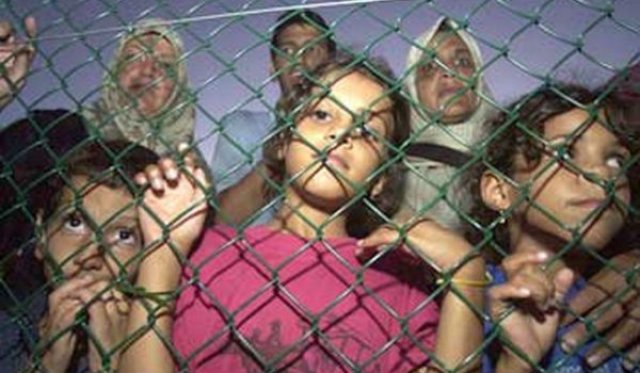
Figures released by the department of immigration showed the number of refugees held in Australian mainland detention peaked at 10,271 in November last year, the highest since mandatory detention began.
This included housing and alternative places of detention, but not the almost 400 men held on Nauru by that time.
Children made up 1221 of those held in detention as at December, another record high. The last time more than 1000 children were held in detention, the government was forced to allow more than half to be released.
There were 591 people who had been in detention for more than two years. In total, 923 people had been in detention for more than a year.
About 44% were refugees from Sri Lanka. The Asylum Seeker Resource Centre said that 50 refugees were known to be locked up due to a negative ASIO security assessment. But hundreds of others have also been accepted as refugees, given security clearance and yet remained in detention.
It said reasons for this included the department investigating the possibility of criminal charges, as well as health quarantine.
But as these shocking numbers were released, the media’s focus was on a new deal Prime Minister Julia Gillard had made with New Zealand.
The deal would mean the conservative New Zealand government would reserve 150 of its 750 humanitarian quota for refugees from the Australian system each year.
Gillard said this could include refugees now held on Nauru and Manus Island, and “the aim here is to have it start in 2014 and be ongoing”.
New Zealand Prime Minister John Key said Australia was “grappling” with a “huge challenge”, that of “illegal arrivals by sea”. He said the deal would be among “efforts to disrupt people smuggling”.
During a joint press conference with GIllard on February 10, he said: “As part of our support for a regional approach, New Zealand will resettle 150 genuine refugees annually from the Australian system ... as part of the 750 refugees that we annually take.
"So it's not an increase in the number of refugees New Zealand takes but a different sourcing of the location of those refugees."
There was little detail on why either party found the deal beneficial. Key said New Zealand would get access to intelligence and resources from Australia.
But a few days later, he told New Zealand parliament that the deal would “encourage [Australia] to keep boats they might otherwise shepherd across the Tasman”, APP said on February 12.
He said he had received advice that this “was always a possibility for a previous boat”.
Australia’s critically high detention numbers — which are known to cause extremely distressing environments for people held in crowded detention — is a result of its mandatory detention policy and refusal to accept or begin processing the claims of refugees that arrived after August 14.
This was the date that Gillard announced the government would reboot the Pacific solution.
Handing just 150 refugees over to New Zealand, with no rise in its humanitarian visa intake, is not even a band aid, but a diversion from the rising crisis for Australia’s mandatory detention system on the mainland and offshore.
